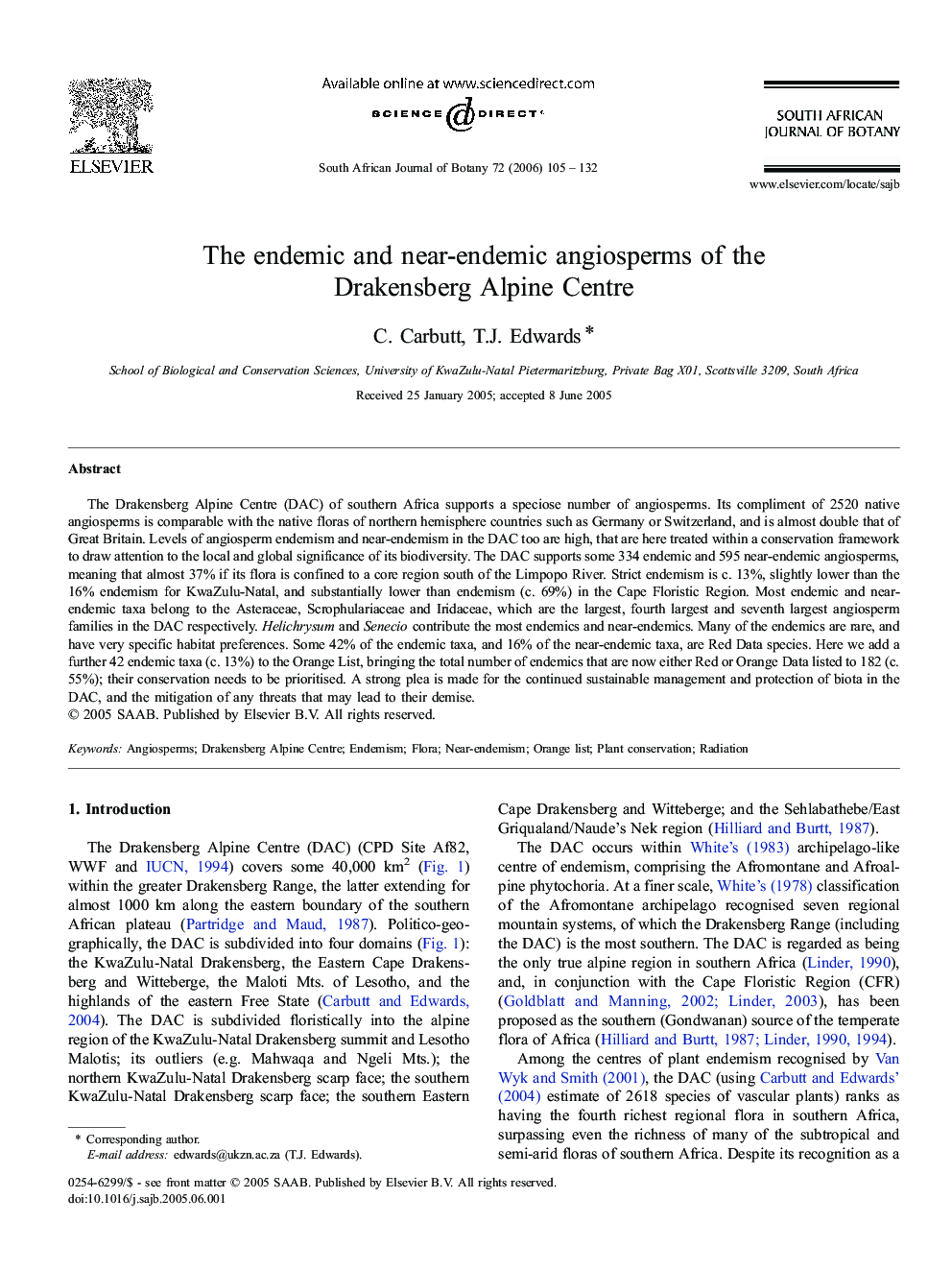| Article ID | Journal | Published Year | Pages | File Type |
|---|---|---|---|---|
| 4522032 | South African Journal of Botany | 2006 | 28 Pages |
The Drakensberg Alpine Centre (DAC) of southern Africa supports a speciose number of angiosperms. Its compliment of 2520 native angiosperms is comparable with the native floras of northern hemisphere countries such as Germany or Switzerland, and is almost double that of Great Britain. Levels of angiosperm endemism and near-endemism in the DAC too are high, that are here treated within a conservation framework to draw attention to the local and global significance of its biodiversity. The DAC supports some 334 endemic and 595 near-endemic angiosperms, meaning that almost 37% if its flora is confined to a core region south of the Limpopo River. Strict endemism is c. 13%, slightly lower than the 16% endemism for KwaZulu-Natal, and substantially lower than endemism (c. 69%) in the Cape Floristic Region. Most endemic and near-endemic taxa belong to the Asteraceae, Scrophulariaceae and Iridaceae, which are the largest, fourth largest and seventh largest angiosperm families in the DAC respectively. Helichrysum and Senecio contribute the most endemics and near-endemics. Many of the endemics are rare, and have very specific habitat preferences. Some 42% of the endemic taxa, and 16% of the near-endemic taxa, are Red Data species. Here we add a further 42 endemic taxa (c. 13%) to the Orange List, bringing the total number of endemics that are now either Red or Orange Data listed to 182 (c. 55%); their conservation needs to be prioritised. A strong plea is made for the continued sustainable management and protection of biota in the DAC, and the mitigation of any threats that may lead to their demise.
